The foundations of Antarctica

The oldest rocks in Antarctica are Precambrian schists and gneisses, spanning the greater proportion of geological time, from at least 3100 to 480 million years (m.y.). From about 550 m.y. ago, marine sediments and volcanic rocks were by being caught up in deformed and metamorphosed at active plate margins. |
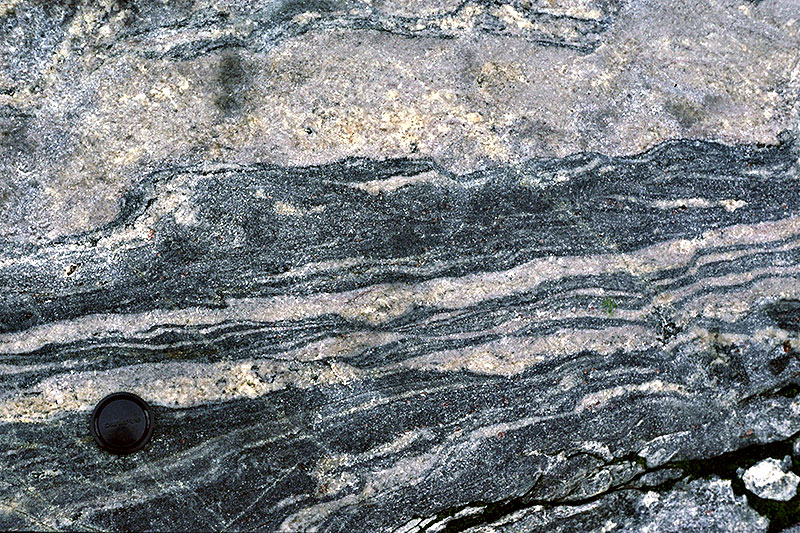 Layering in Archaean gneiss near Casey station in East Antarctica reflects the high temperature and pressure under which this rock formed. | 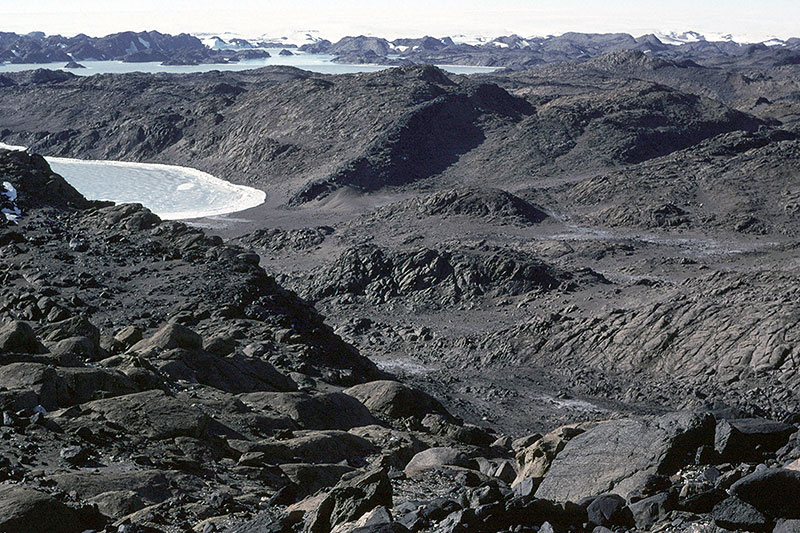 Typical Archaean basement gneiss, such as the Vestfold Hills near Davis Station (Australia) in East Antarctica is characterised, where ice-free, of so-called “knock-and-lochan” topography. | 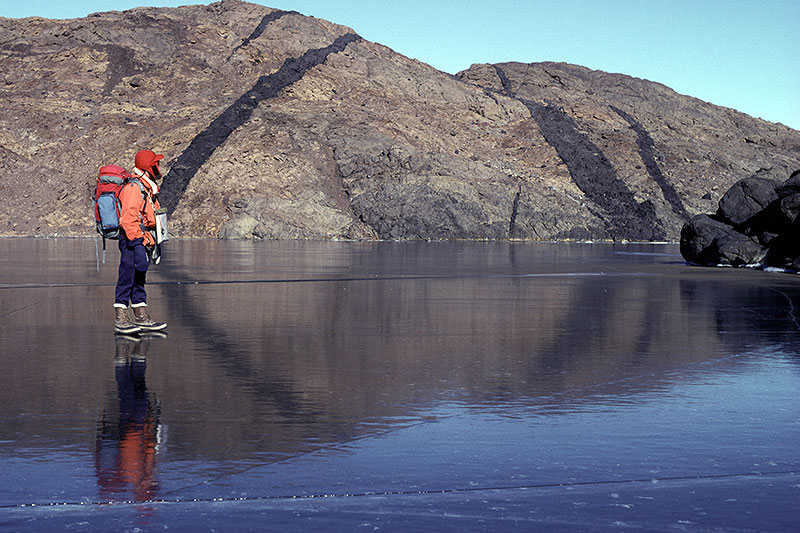 The ancient crystalline rocks in the Vestfold Hills near Australia’s Davis station in East Antarctica are here cut by basaltic dykes of Proterozoic age. | 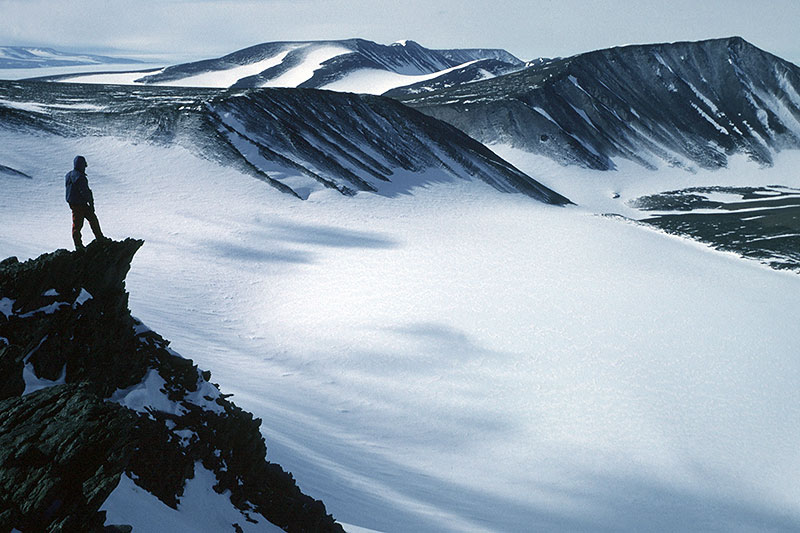 The Prince Charles Mountains bordering the Lambert Glacier system of East Antarctica comprise crystalline metamorphic rocks that have been subject to mountainbuilding events (“orogenies”). This view shows the Fisher Massif which represents a dissected plateau remnant rising to over 1700m. |
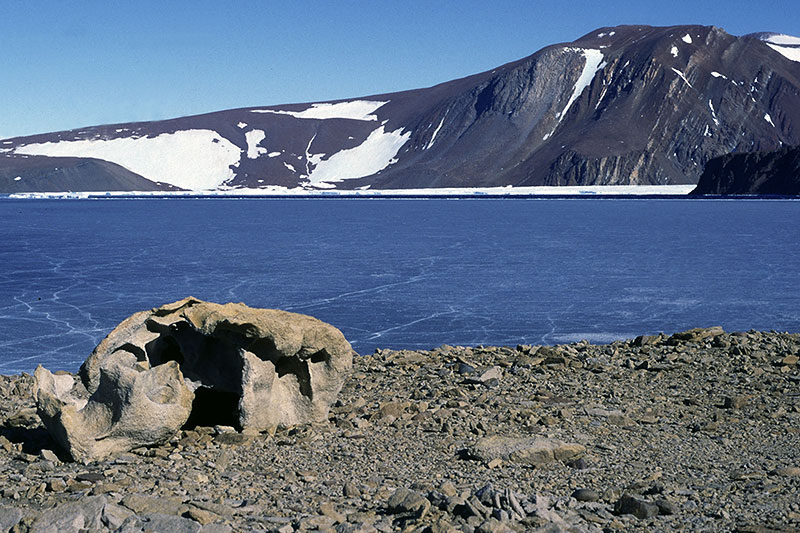 Bordering the Lambert Glacier system is the deepest exposed lake in Antarctica, Radok Lake on Amery Oasis. Steeply dipping Proterozoic metamorphic rocks are exposed along one side of the lake (background), while younger (Permian) sedimentary rocks occupy the foreground. A fault separates the two groups of strata. | 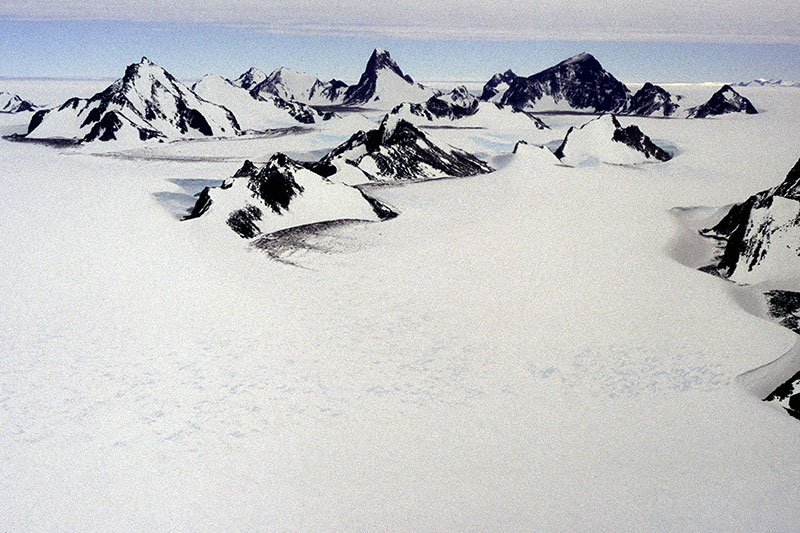 The Porthos Range, inland of Australia’s Mawson Station are characterised by isolated alpine peaks almost buried by the East Antarctic Ice Sheet. They comprise gneisses of late Proterozoic age. | 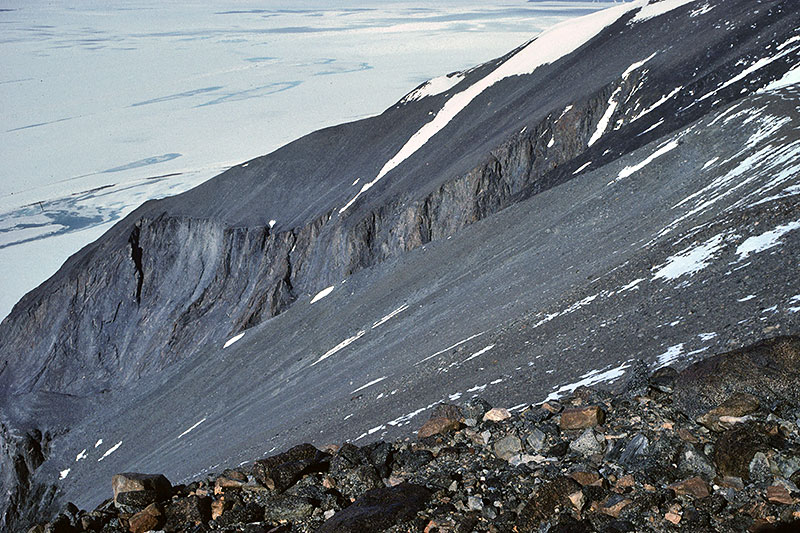 The Proterozoic basement rocks of Fisher Massif form the rifted margin of the Lambert Graben, which here is occupied by the Amery Ice Shelf. The rocks are uplifted, along with the softer Cenozoic glacial deposits, the boundary between the two being the uplifted floor of a glacially eroded trough. | 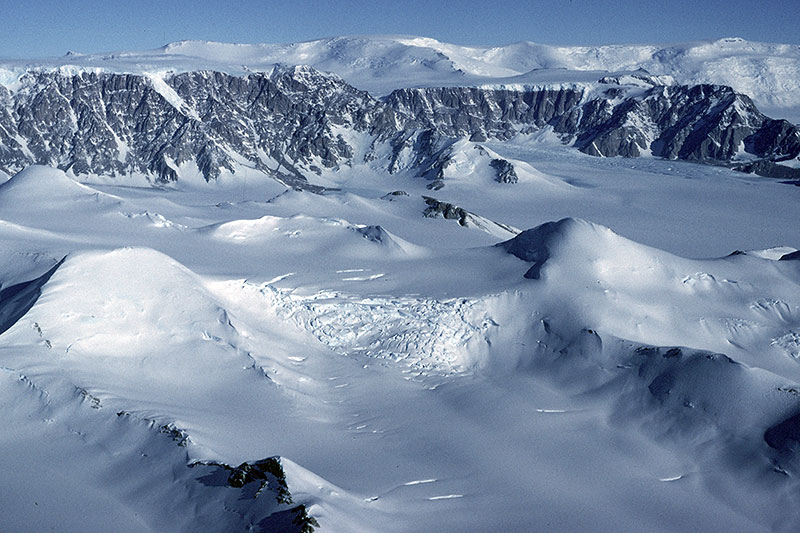 The Transantarctic Mountains, depicted here, started growing about 50 million years ago, and represent the shoulders of the rift zone now occupied by the Ross Sea. The oldest rocks that form the core of this range are metamorphic rocks that were deformed during the Early Palaeozoic Ross Orogeny. |
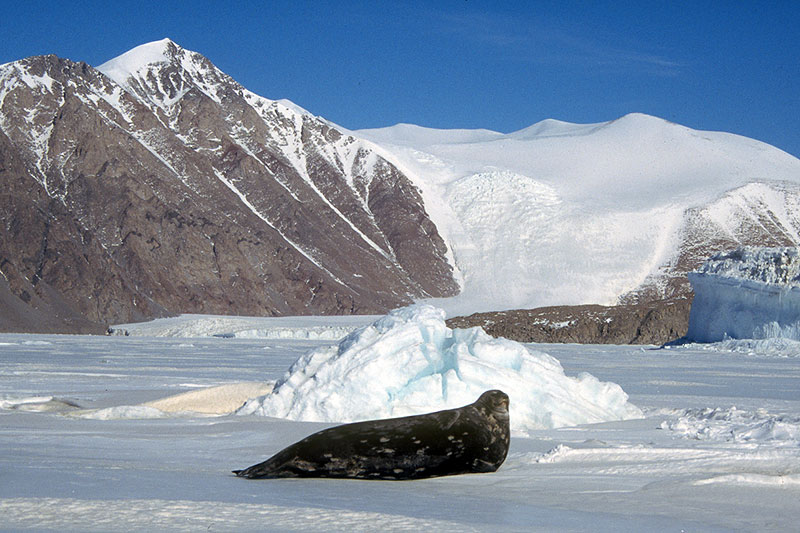 Mount England, adjacent to Mackay Glacier in the western Ross Seam is composed of granitic and metamorphic rocks of the Ross Orogeny. A Weddell seal lies on the sea ice in the foreground. | 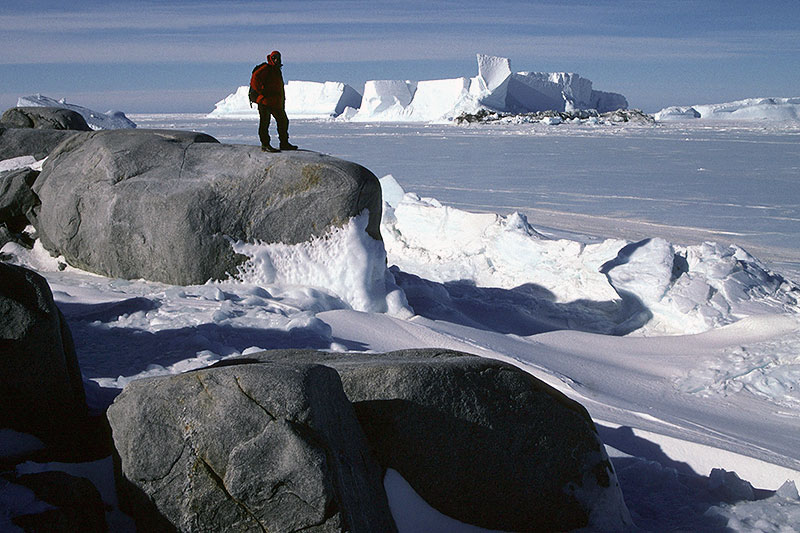 Exposures of granite belonging to the Ross Orogeny at Cape Roberts, McMurdo Sound. A grounded iceberg, incorporating sea-floor sediment lies across the sea ice in the background. | 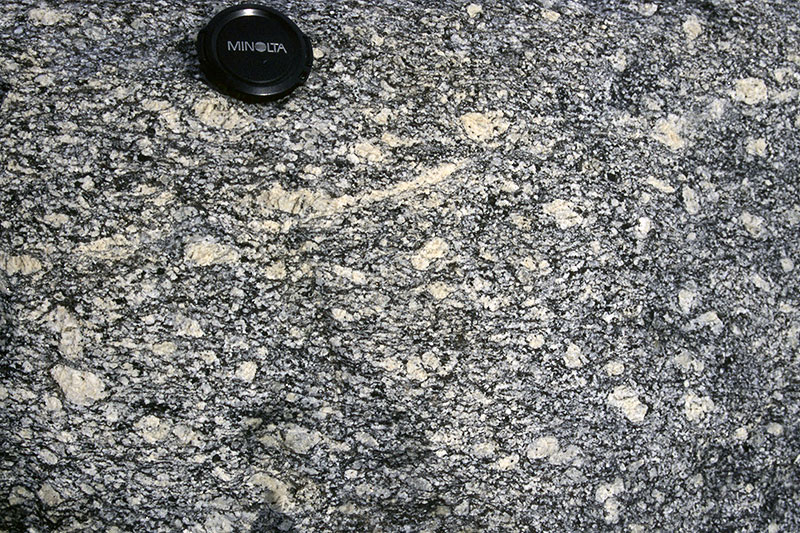 The crystalline texture of this Ross Orogeny granite shows alignment of white feldspar crystals, indicating deformation during or after intrusion on a small island in Granite Harbour, Western Ross Sea. | 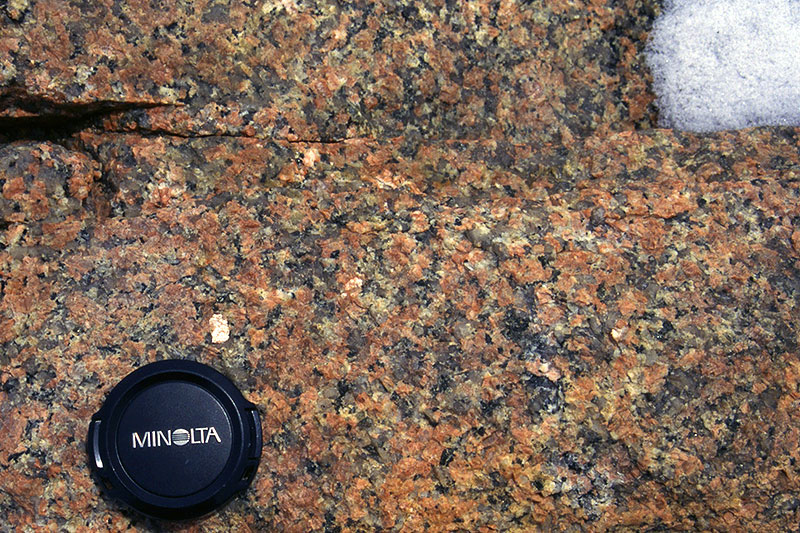 Granite from the Ross Orogeny, in this case showing an undeformed texture and the characteristic light-coloured minerals of quartz (grey) and feldspar (white and pink). The same small island in Granite Harbour, Western Ross Sea. |
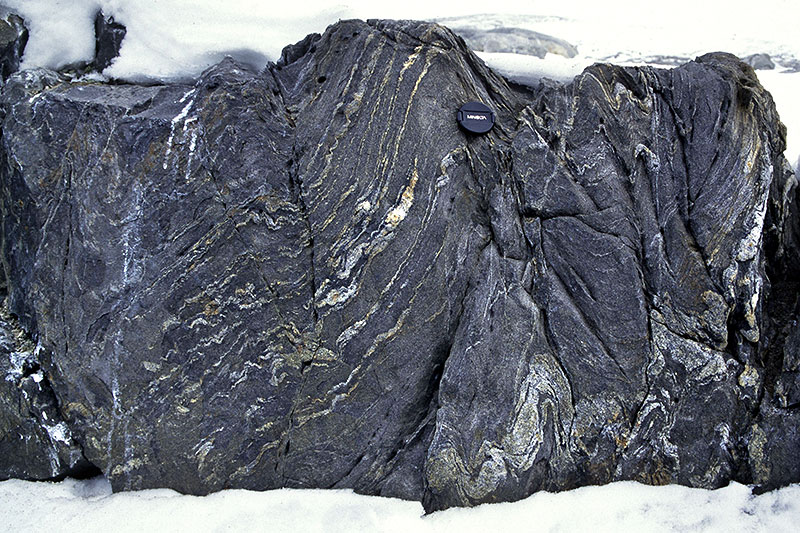 Strongly folded pelite (a mud-dominated metamorphic rock) with quartz veins. The deformation was the result of the Early Palaeozoic Ross Orogeny. Dunlop Island, McMurdo Sound. | 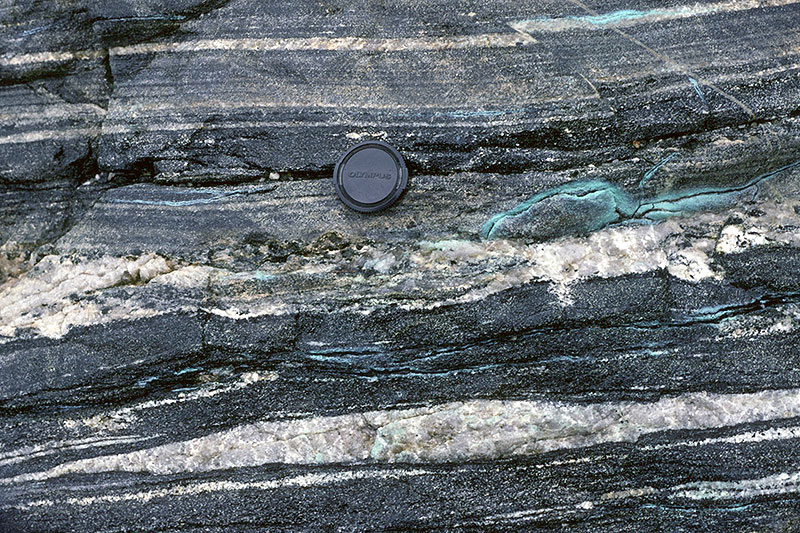 Gneiss near Casey Station, East Antarctica (Australia), showing signs of copper mineralisation (green). Heavy metals are likely to be widespread in Antarctica, but commercial exploitation is unlikely in the foreseeable future. | | |
| Photos Michael Hambrey |